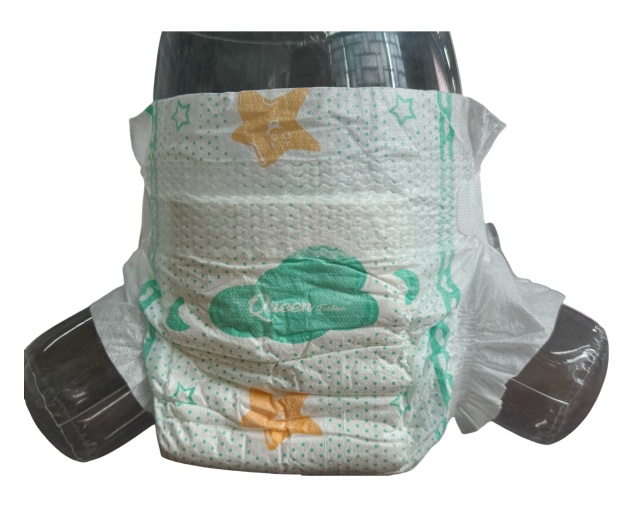The design and functionality of diapers have evolved significantly over the years, driven by advances in materials and consumer demands for improved performance. One key innovation in this domain is the incorporation of frontal waist tape, which plays a crucial role in enhancing diaper fit. This article explores the relationship between frontal waist tape and diaper performance, emphasizing the materials used in their production and the implications for user experience.
Understanding Frontal Waist Tape
Frontal waist tape is a specialized component of modern diapers, designed to secure the garment around the wearer’s waist. It consists of adhesive tapes or fasteners strategically placed at the front of the diaper. These tapes allow for a customizable fit, accommodating different body shapes and sizes. The ability to adjust the tension and positioning of the tape helps to create a snug fit, which is essential for preventing leaks and ensuring comfort.
The materials used in frontal waist tape are typically high-quality adhesives and flexible fabrics. Commonly, materials like polyethylene and polypropylene are utilized, providing both strength and elasticity. These materials not only enhance the durability of the tape but also ensure that it adheres securely to the diaper without causing irritation to the skin. The combination of these materials leads to a better overall user experience, making diapers more reliable and effective.

The Role of Materials in Fit and Comfort
The performance of frontal waist tape is heavily influenced by the materials used in its construction. For instance, the choice of adhesive plays a pivotal role in how well the tape adheres to the diaper and maintains its position throughout wear. Adhesives must be strong enough to withstand movement and pressure while also being gentle on the skin to prevent rashes or discomfort.
Furthermore, the elasticity of the materials used in the waist tape contributes to a comfortable fit. When a diaper is put on, the frontal waist tape must stretch and conform to the wearer’s body shape. Materials that exhibit high elasticity can accommodate various body movements without compromising the fit. This is particularly important for active infants and toddlers, who are constantly on the move. A well-fitting diaper allows for freedom of movement while preventing leaks, which is a critical concern for caregivers.
Enhancing Leak Prevention
One of the primary benefits of a well-designed frontal waist tape is its ability to enhance leak prevention. A secure fit around the waist minimizes gaps that could allow for leakage, especially during active play or overnight use. The adjustable nature of the tape means that caregivers can achieve a tailored fit, accommodating different body types and ensuring that the diaper remains snug against the skin.
Moreover, the integration of frontal waist tape with the overall diaper design contributes to the effectiveness of other features, such as leg elastics and absorbent cores. When the waist is properly secured, the diaper's absorbent materials can perform optimally, as they are better positioned to absorb moisture and contain waste. This synergy between the frontal waist tape and other components is essential for creating a reliable product that meets the needs of both wearers and caregivers.
User Experience and Satisfaction
The impact of frontal waist tape on user experience extends beyond functional performance; it also influences caregiver satisfaction. A diaper that fits well and effectively prevents leaks reduces the stress associated with changing times. Caregivers appreciate products that are easy to apply and adjust, and the frontal waist tape simplifies this process. By allowing for quick adjustments, caregivers can ensure that the diaper remains securely in place throughout wear.
Additionally, the comfort provided by a well-fitting diaper contributes to overall satisfaction. When infants and toddlers are comfortable, they are less likely to experience fussiness or irritation. This, in turn, creates a positive experience for both the child and the caregiver. The use of soft, breathable materials in conjunction with frontal waist tape further enhances comfort, making it a vital consideration in diaper design.

Conclusion: The Future of Diaper Technology
As the demand for high-performance diapers continues to rise, innovations like frontal waist tape are expected to play a central role in future developments. The focus on materials that provide better adhesion, elasticity, and comfort will drive advancements in this area. Moreover, ongoing research into user preferences and experiences will inform the design of diapers that not only meet functional requirements but also enhance overall satisfaction.
In conclusion, frontal waist tape is a significant innovation in diaper technology, improving fit, comfort, and leak prevention through the use of specialized materials. As the industry evolves, the integration of advanced materials and user-centric design will remain essential for creating products that effectively meet the needs of caregivers and their children.

